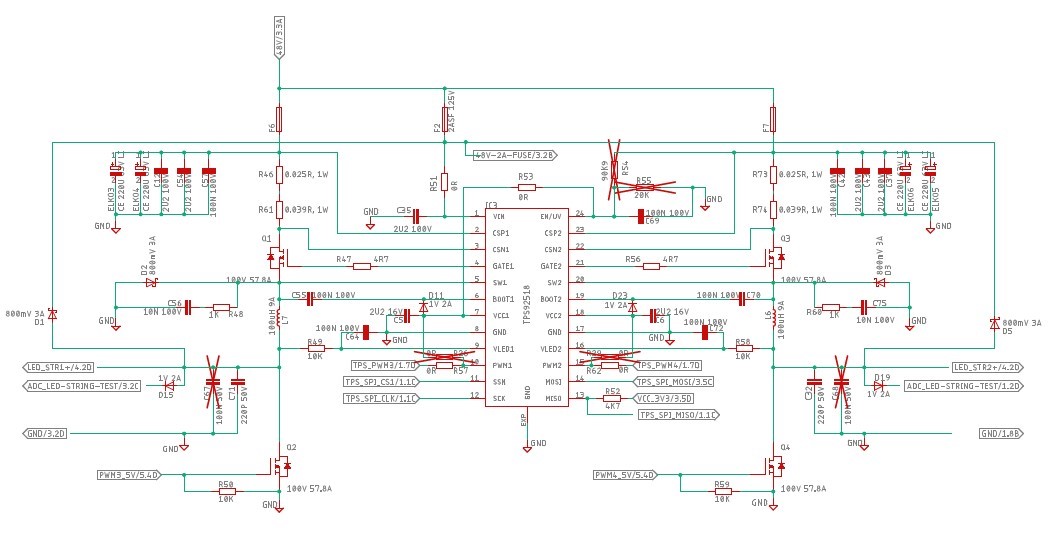Other Parts Discussed in Thread: TPS92518
Hi,
we have done a design with 2 altmost identical TPS92518HV (i.e. 4 channels). The design is closely related to the EVM schematic, see below.
When activating the shunt FET, the TPS dies exothermically and sometimes also the Shunt- or the TPS-FET, even at low LED currents ~200 mA and VCC <= 30V.
To prevent overshoot, we have implemented all suggested measures.
The design should be able to handle at least 5 amps LED current, that's why we used a different inductor type (same L but higher current) and different MOSFETs (NVTFS010N10MCL) as used in the EVM schematic.
Any ideas why that happens?
Regards
Roland



